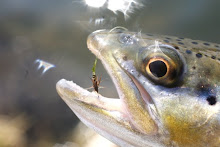TODAY'S NYTIMES:
EditorialSalmon TestPublished: August 11, 2009The National Oceanic and Atmospheric Administration must notify a federal court next month whether it will do what is necessary to save endangered salmon in the Pacific Northwest. The decision will tell us a lot about how the administration sees its obligations under the Endangered Species Act. The Bush team evaded its responsibilities with amazing acts of legal casuistry.
A dozen salmon species in the Columbia River Basin have been declared endangered or threatened — their spawning grounds destroyed by logging and commercial development, and their route to the sea made more arduous by a gauntlet of hydroelectric dams.
Over the years, the Bonneville Power Administration, which runs the dams, and other agencies have unblocked spawning streams and increased water flows over the dams to help young fish reach the sea. But that has not been enough to restore what scientists regard as sustainable fish runs. And it has not been enough for James Redden, a federal district judge in Oregon who has become the salmon’s most reliable defender.
Since 2003, Judge Redden has rejected two recovery plans devised in the Clinton and Bush administrations. Both promised further habitat restoration and further modifications in dam operations. Neither, in the judge’s view, did enough to ensure the fish’s long-term survival. And while the Endangered Species Act requires that every effort be made to ensure the recovery of a species, the Bush plan promised little more than allowing the fish to go extinct at a slower rate.
Judge Redden was about to toss a second Bush plan earlier this year on some of the same grounds when the Obama administration asked for time to review it. The judge said fine, while warning that he could not accept any revision that adopted the Bush administration’s misinterpretation of the law.
Significantly, he also said that any new plan should leave all recovery options on the table, including the idea of breaching four dams on the lower Snake River. We have long recommended such a course, which many scientists see as the surest means of restoring the fish.
The judge has now given the administration 30 days to get this right. The official who will ultimately make the decision is Gary Locke, the secretary of commerce and former governor of Washington. We would be surprised if he recommended immediate breaching. Ways must be found to replace the power that the dams generate, which amounts to 4 percent of the region’s total. But he has to do better than his predecessors, otherwise Judge Redden could well place the operations of the hyrdroelectric system under court order and devise a plan of his own.
This means that at the very least Mr. Locke must reject the Bush plan, promise to devise a new one in close consultation with regional interests and keep dam removal on the table as very real backup if all else fails.
TODAY'S NYTIME





